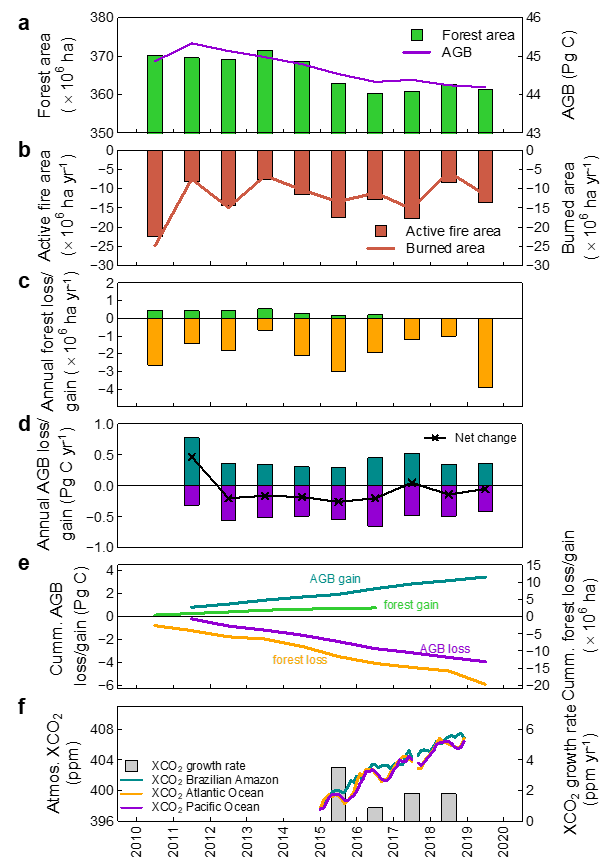An international team led by Xiangming Xiao, George Lynn Cross Research Professor in the Department of Microbiology and Plant Biology, University of Oklahoma College of Arts and Sciences, published a paper in the April issue of the journal Nature Climate Change that has major implications on forest policies, conservation and management practices in the Brazilian Amazon (https://dx.doi.org/10.1038/s41558-021-01026-5). Xiao also is director of OU’s Center for Earth Observation and Modeling. Yuanwei Qin, a research scientist at the Center for Earth Observation and Modeling at OU, is the lead author of the study.
For the study described in the paper, “Carbon loss from forest degradation exceeds that from deforestation in the Brazilian Amazon,” Xiao, Qin and a team of research scientists and faculty from institutes and universities in the United States, France, the United Kingdom, Denmark and China used satellite data to track spatial-temporal changes of forest area and aboveground biomass in the Brazilian Amazon from 2010 to 2019. They discovered that carbon loss from forest degradation was greater than that resulting from deforestation in the region, which indicates forest degradation should become a high priority in policies, conservation and management.
Tropical forests in the Amazon account, Qin notes, for approximately 50% of the rainforests in the world and are important for global biodiversity, hydrology, climate and the carbon cycle. Accurate and timely data on vegetation aboveground biomass and forest area in the region at various spatial and temporal scales are also essential for data-based policies and decision making. This international team harnessed diverse data for monitoring, reporting and verification of tropical forests. The paper published in Nature Climate Change is a follow-up of a previous study published in Nature Sustainability in 2019, which reported improved estimates of forest areas in the Brazilian Amazon.
“OU’s Center for Earth Observation and Modeling is leading research efforts to help scientists better understand and predict climate impacts,” said OU Vice President for Research and Partnerships Tomás Díaz de la Rubia. “This international collaboration is a terrific representation of transdisciplinary research bringing attention to the impact of forest degradation.”



